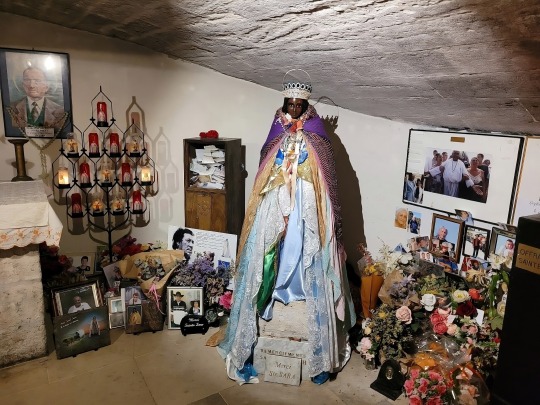#south america indians
Explore tagged Tumblr posts
Text

Thanks to: @hypatia--of
Yanomami woman, Amazonia, Brazil. Photo by Sebastião Salgado
538 notes
·
View notes
Text
Anybody who knows more about Indigenous American languages have a deep dive on place name etymology in Dawntrail?
I know Xak Tel (& esp the X'braal) use Yucatan Maya names (tsoly is one way of transliterating the Maya word for cenote; cenote is derived from that word), & Urqopacha uses a lot of Quechua words. But I'm NOT at all well versed in indigenous languages of the Americas, so those are the only two I spotted. I'm especially curious about the languages referenced in Shaaloani.
#american indian#native american#yucatán#yucutan maya#maya#quechua#mexico#chile#peru#brazil#columbia#central america#south america#american southwest#american indian languages#native american languages#ffxiv#dawntrail
33 notes
·
View notes
Text

Murika
#Murika#iraqi#operation iraqi freedom#iraq war#iraq news#iraq#north korea#korean#south korea#w korea#vogue korea#dazed korea#korea#usa is a terrorist state#usa news#usa politics#usa#american indian#american#america#amerika#amerikkka#ausgov#politas#auspol#tasgov#taspol#australia#fuck neoliberals#neoliberal capitalism
15 notes
·
View notes
Text
i love!!! pavitr!!!! best part about him is that the astv creators just said he's indian. he could be any type of indian and you wouldn't be wrong. maybe he's malayali. maybe he's from mizo. maybe he's from punjab. maybe he's tamilian. maybe he's from sikkim. you decide!!!!
#'oh but he's from mumbattan!!1!!“'#ok. so?#mumbai based malayali#mumbai based punjabi#mumbai based manipuri kid#he really is mr. india#and like not to be too bitter here but like usually when we get indian characters they're usually north indian#which like i get. there are a lot more north indians in america than south probably but like while there are some overarching similarities#between north and south indians we're not the same. and it does get a little disheartening watching a new indian character#onscreen knowing you can't really relate to them at all.#but like pav is just like ambiguously indian. like he has no identifying characteristics of any indian states#like the most you could say is that he's maharashtrian cause mumbai is in Maharashtra#and like i love pavitr for that!!!#also before someone says smth#disclaimer! evrythg i said in the tags is based on how i feel as an american born south indian kid#pavitr prabhakar#astv#spiderman india
109 notes
·
View notes
Text

#melanin#unity among ghetto groups#black family#black economics#poor people rights#good black imagery#imperialism#melanated#africa#carribbean#south america#imminent domain#aboriginal indians#ethnicity#nationality#black history#black civilization#unity#dr neely fuller jr#dr frances cress welsing#dr martin luther the king#dr joy degruy#dr amos wilson#black people#more humanity less divison#black man#black woman#black yout
9 notes
·
View notes
Text


the shrine of saint sarah in the church of the saintes-maries-de-la-mer in in the camargue in france. the church itself was built in the 9th century and named for and dedicated to the three marys. a popular french legend goes that they and their maid, sarah, landed on a camargue coast.
saint sarah, or sarah-e-kali (sarah the black, “the black” is a title sometimes given to black/dark-skinned saints) in romani, is the patron saint of roma people in latin catholicism, though she isn't recognized by the catholic church. she is also revered as a protector for marginalized and poor people in general. her origins are thought to lie in a syncretization of the hindu goddess kali, the story of sarah along with the three marys, and the tradition of black madonnas. (christian roma have historically venerated other black madonnas as well.) the church is her major shrine - she's venerated here annually on the 24th of may by roma pilgrims.
#france#romani#interior#worship#christian#my posts#brahmic (hindu buddhist etc) deities are syncretized into a bunch of very specific forms depending on where you look#and one can have a bunch of different forms that are ultimately the same being/idea#it fits perfectly into the concept of saints if you think about it#not that people think saints are gods but the like. manifestations thing#i think there's some syncretic christianity/west african religions/hindu traditions in places 18th/19th century enslaved indians#were shipped to (mostly in central/south america which has a big history of syncretic christianity in general)
21 notes
·
View notes
Photo

‘Chimú Funerary Attire’, Imperial Epoch (1300 AD-1532 AD), at the Museo Larco in Lima, Peru
These gold adornments once belonged to a major leader of the mud brick city known as Chan Chan, the capital of the Chimú Empire. The feathers on the crown, breastplate and epaulettes express the relationship between birds and the sun, in the celestial world.
#chimu#moche#inca#peru#pre-columbian#south america#gold#jewelry#andean#atlantis#indigenous people#american indians
130 notes
·
View notes
Text



#or if you don’t like America#you’re gay btw#here’s the awesome Crazy Horse Memorial also in the black hills#crazy horse memorial#the black hills#South Dakota#Sioux#Indians#native American#American Indian#adventure#travel#my photo#aesthetic#photography#mountains#America#USA#sculpture#art
41 notes
·
View notes
Text
hello people of tumblr. tell me some genres of music that you like and think i should listen to this year :D
some of the genres on my list so far: medieval rock, balkan folk metal, desi pop, japanese metal, african polka, and more
#peters genre adventures 2024#i'm open to anything#but i'm especially interested if you have any indian music recommendations as that's the part of the world i'm most excited to listen#to more of#i've listened to indian stations on radio garden and love bollywood movies but haven't made the leap into spotify until recently#but i'm also totally new to africa and most of south america#so any recs go
8 notes
·
View notes
Text

Kouki Palo Santo?????? I never heard of it before...let's see....
Palo Santo, which means "holy wood" in Spanish, is a tree native to South America, primarily found in the tropical forests of countries like Peru, Ecuador, and parts of Central America. Its scientific name is Bursera graveolens. Palo Santo is renowned for its fragrant wood, which has been used for centuries in indigenous and spiritual practices for its aromatic properties and believed healing properties.
The wood is traditionally burned as incense during ceremonies and rituals for its pleasant, uplifting scent. It's also used for its reported medicinal properties, with claims of benefits ranging from calming the mind and reducing stress to repelling insects and aiding respiratory issues.
Due to its popularity and increased demand, there have been concerns about the sustainability of Palo Santo harvesting. It's important to source Palo Santo from sustainable and ethical suppliers to ensure the conservation of this valuable resource and support the communities that depend on it.
In recent years, there has been growing interest in Palo Santo outside of traditional spiritual practices, with its essential oil being used in aromatherapy and its wood incorporated into various products like candles, soaps, and skincare items. However, it's crucial for consumers to be mindful of the source and sustainability of the Palo Santo used in such products.
#Palo Santo#So not only in Asian. South America and Peru too. Hmm....Why Asian share something very similar to West Asia?#How is it connected to meditation? I saw that some tribes used minerals and used like this. Example red indian#history#culture
2 notes
·
View notes
Text

American Holocaust — David E. Stannard
#i think about (and other stories like this) a lot#pre-columbian#child rearing#codes of friendship#aztec#mexican#iroquois#indians of california#hospitality#cartier#1500s#american holocaust#American Holocaust: The Conquest of the New World#holocaust#David E. Stannard#history#nonfiction#spanish#north america#south america#native#indigenous#mexico#atypicalreads#nsnv#cw genocide#cw violence#colonialism#central america
2 notes
·
View notes
Video
n169_w1150 by Biodiversity Heritage Library Via Flickr: Voyage dans l'Amérique méridionale Paris, :Chez Pitois-Levrault et ce., libraires-éditeurs, rue de la Harpe, no. 81;1835-1847. biodiversitylibrary.org/page/9183005
#1802-1857#Chiquito language#Description and travel#Guarani language#Imprint 1835#Imprint 1847#Indian linguistics#Indians of South America#Mapuche language#Moro language (South America)#Natural history#Orbigny#Alcide Dessalines d'#South America#Texts#Travel#Missouri Botanical Garden#Peter H. Raven Library#bhl:page=9183005#dc:identifier=https://biodiversitylibrary.org/page/9183005#Palms#Palmiers#MAXIMILIANA regia#ATTALEA princeps#Attalea maripa#maripa palm#Attalea blepharopus#Attalea butyracea#scientific illustration#botanical illustration
2 notes
·
View notes
Text
FEMA first responders told to evacuate Rutherford County because of "armed militia" driving around "hunting" them in the area.
https://www.newsweek.com/armed-militia-hunting-fema-hurricane-responders-1968382
#fema#first responders#rutherford county#armed militia#militia#hunting#hurricanes#hurricane#north carolina#south carolina#carolina#usa is a terrorist state#usa is funding genocide#usa news#usa politics#usa#american indian#american#america#ausgov#politas#auspol#tasgov#taspol#australia#fuck neoliberals#neoliberal capitalism#anthony albanese#albanese government
2 notes
·
View notes
Text
Quite the pattern, don't you think?

#free palestine#palestine#gaza#palestine will be free#france#america#uk#united kingdom#yemen#lebanon#afghanistan#israel massacre#israel is a terrorist state#occupied palestine#government#usa#occupation#stop occupation#end the occupation#end the genocide#ethnic cleansing#ceasefire now#freepalastine🇵🇸#from the river to the sea palestine will be free#israel#human#human rights#red indian#south africa#africa
25K notes
·
View notes
Photo

America: Being the Latest, and Most Accurate Description of the New World (1671)
#america#north america#south america#central america#west indies#the new world#1492#aztec empire#inca empire#american indians
74 notes
·
View notes
Text

https://nationalpost.com/news/canada/theyre-not-human-how-19th-century-inuit-coped-with-a-real-life-invasion-of-the-walking-dead
Indigenous groups across the Americas had all encountered Europeans differently. But where other coastal groups such as the Haida or the Mi’kmaq had met white men who were well-fed and well-dressed, the Inuit frequently encountered their future colonizers as small parties on the edge of death.
“I’m sure it terrified people,” said Eber, 91, speaking to the National Post by phone from her Toronto home.
And it’s why, as many as six generations after the events of the Franklin Expedition, Eber was meeting Inuit still raised on stories of the two giant ships that came to the Arctic and discharged columns of death onto the ice.
Inuit nomads had come across streams of men that “didn’t seem to be right.” Maddened by scurvy, botulism or desperation, they were raving in a language the Inuit couldn’t understand. In one case, hunters came across two Franklin Expedition survivors who had been sleeping for days in the hollowed-out corpses of seals.
“They were unrecognizable they were so dirty,” Lena Kingmiatook, a resident of Taloyoak, told Eber.
Mark Tootiak, a stepson of Nicholas Qayutinuaq, related a story to Eber of a group of Inuit who had an early encounter with a small and “hairy” group of Franklin Expedition men evacuating south.
“Later … these Inuit heard that people had seen more white people, a lot more white people, dying,” he said. “They were seen carrying human meat.”
Even Eber’s translator, the late Tommy Anguttitauruq, recounted a goose hunting trip in which he had stumbled upon a Franklin Expedition skeleton still carrying a clay pipe.
By 1850, coves and beaches around King William Island were littered with the disturbing remnants of their advance: Scraps of clothing and camps still littered with their dead occupants. Decades later, researchers would confirm the Inuit accounts of cannibalism when they found bleached human bones with their flesh hacked clean.
“I’ve never in all my life seen any kind of spirit — I’ve heard the sounds they make, but I’ve never seen them with my own eyes,” said the old man who had gone out to investigate the Franklin survivors who had straggled into his camp that day on King William Island.
The figures’ skin was cold but it was not “cold as a fish,” concluded the man. Therefore, he reasoned, they were probably alive.
“They were beings but not Inuit,” he said, according to the account by shaman Nicholas Qayutinuaq.
The figures were too weak to be dangerous, so Inuit women tried to comfort the strangers by inviting them into their igloo.
But close contact only increased their alienness: The men were timid, untalkative and — despite their obvious starvation — they refused to eat.
The men spit out pieces of cooked seal offered to them. They rejected offers of soup. They grabbed jealous hold of their belongings when the Inuit offered to trade.
When the Inuit men returned to the camp from their hunt, they constructed an igloo for the strangers, built them a fire and even outfitted the shelter with three whole seals.
Then, after the white men had gone to sleep, the Inuit quickly packed up their belongings and fled by moonlight.
Whether the pale-skinned visitors were qallunaat or “Indians” — the group determined that staying too long around these “strange people” with iron knives could get them all killed.
“That night they got all their belongings together and took off towards the southwest,” Qayutinuaq told Dorothy Eber.
But the true horror of the encounter wouldn’t be revealed until several months later.
The Inuit had left in such a hurry that they had abandoned several belongings. When a small party went back to the camp to retrieve them, they found an igloo filled with corpses.
The seals were untouched. Instead, the men had eaten each other.
#being so English you die of racism#because youd rather eat each other than a seal#or try to signal to the friendly locals that you need help#many such cases#UNIRONICALLY#the terror#the franklin expedition#dorothy eber#then they infected all these people with European disease of course#the national post is a chud rag so this is an unexpectedly good article for them
56K notes
·
View notes